Physocarpus opulifolius
Native shrub with clusters of small bell-shaped flowers
Physocarpus opulifolius eastern ninebark
Decidious shrub with white showy flower clusters. The flowers are small bell-shaped and have five rounded pink or white petals and many stamens. The showy cluster is 1-2 inches in diameter. The blooming period is late May to mid-June. The resulting fruit is a long-lasting inflated reddish follicle that splits open to release large number of seeds. The fruit occur in a cluster similar to that of the flowers, but hangs downward due to their weight. The genus name Physocarpus means “bladder fruit” and refers to the inflated fruits many of the species of ninebark.
The leaves of this species have 3-7 lobes and toothed edges. The common name refers to the tendency of the bark on mature branches to peel away in strips. The common ninebark is found throughout central and eastern North America. It is a fairly common shrub throughout the area, but is often mistaken for elderberry.
Ninebark grows 5-8 feet tall and spreads 4-6 feet wide. It is tolerant of cold weather and does well either in full sun or part shade. It is also both drought and disease resistant.
Ninebark can be grown as an ornamental as a hedge. It is also fairly effective for erosion control. It is fairly easy to grow and tolerates a variety of soil, moisture and sunlight conditions. In nature it often occurs along stream banks and in moist thickets. It can also occur in dry rocky open woodland habitats. Birds often use the shrub as a source of cover. It is also called the Atlantic ninebark.
Habitat & Range
Grows in damp woods, sandy or rocky shores.
Present throughout except for northernmost counties.
| EMP: | FACW |
|---|---|
| NCNE: | FACW |
Phenology
Flowers May to July.
Plant Codes
S-rank: No Rank
G-rank: G5 (Secure)
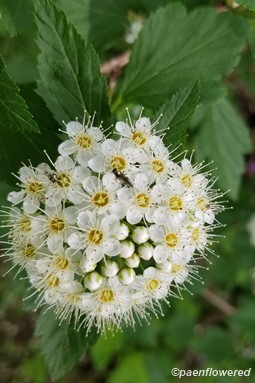
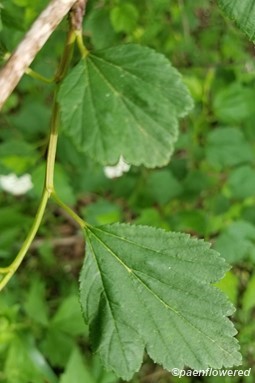
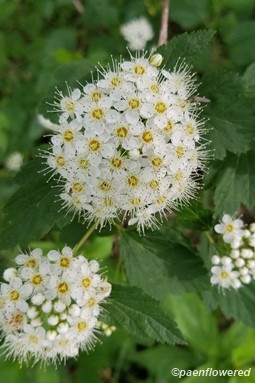

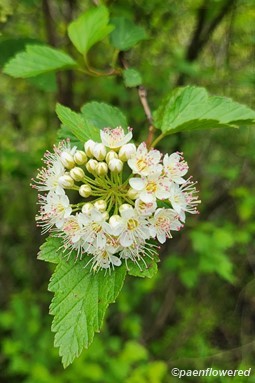


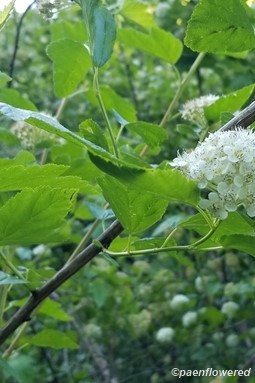

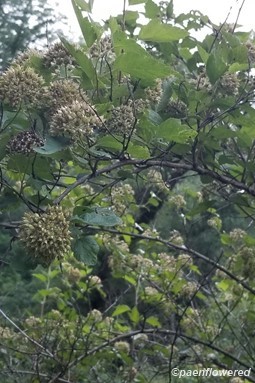

Comments
Have you spotted this plant in your area? We'd love to hear about your experience! Share your comments or questions about the plant below. Comments are moderated before posting.